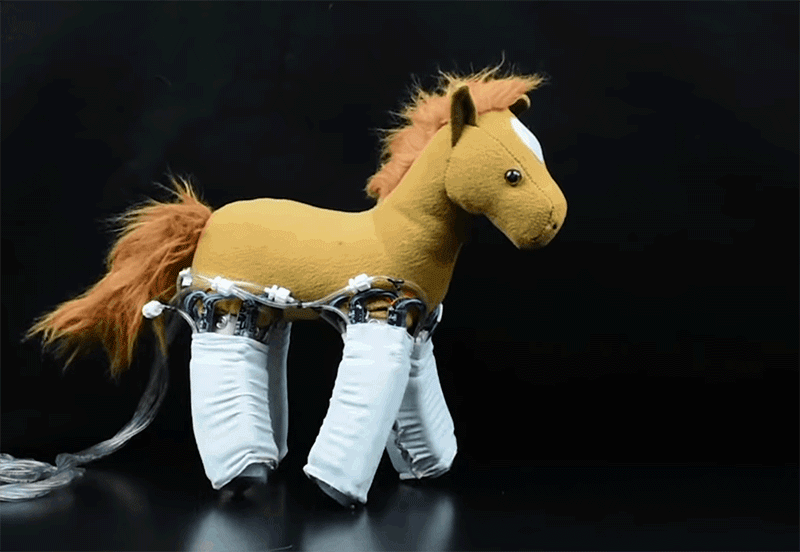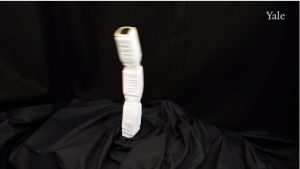 For a few decades now, Toys for Tots has been collecting and delivering toys to underprivileged children around the holidays. The kids who benefit from the program don’t get much in the way of presents, but thanks to Toys for Tots they can receive new stuffed animals, dolls, action figures, games, etc. This year, however Toys for Tots is getting a little bit more high-tech – at least in Central Ohio. Columbus company IC3D is a 3D printing service provider, consulting company, and 3D printing equipment and filament manufacturer with a large community of makers and 3D printing enthusiasts. This holiday season, the company turned to that network to help make the season brighter for local children.
For a few decades now, Toys for Tots has been collecting and delivering toys to underprivileged children around the holidays. The kids who benefit from the program don’t get much in the way of presents, but thanks to Toys for Tots they can receive new stuffed animals, dolls, action figures, games, etc. This year, however Toys for Tots is getting a little bit more high-tech – at least in Central Ohio. Columbus company IC3D is a 3D printing service provider, consulting company, and 3D printing equipment and filament manufacturer with a large community of makers and 3D printing enthusiasts. This holiday season, the company turned to that network to help make the season brighter for local children.
For the first time, 150 beneficiaries of Toys for Tots will be receiving 3D printed toys – specifically, toy robots with arms and legs that move. IC3D enlisted its maker community to 3D print the toys for the organization, using its own donated filament.
“IC3D donated 3D printing filament to a handful of our loyal community members from across the U.S. who were willing to use their machines to make 150 toys. The toys were shipped to IC3D’s factory and then delivered to Toys for Tots central donation location at Rickenbacker,” said Matt Organiscak, VP of Operations at IC3D. “We love sharing the promise of 3D printing technology with everyone, especially kids.”
The volunteers who 3D printed the toy robots for Toys for Tots include Chris Poleski, Clayton Parker, Jim Leemuis, Michael Pimentel, Glenn and Xander Shelton, Shane La Haye, Amie Dansby and Stephani Sharp.
“In the day to day of shaping a new industry, it’s easy to forget the simple joy of sharing a 3D printed object with someone,” Organiscak told 3DPrint.com. “Collaborating with Toys For Tots has been our dream for the past five years. With the growth and awareness of 3D printing, it was a natural fit to tap into our network of 3D Printing colleagues around the country and work with our local U.S. Marines leadership to deliver 150 toys. Manufacturing smiles, one toy at a time, is a great way to share IC3D expertise with others. I look for this effort to grow even bigger next year.”
IC3D is known for its innovation in 3D printer filament, having teamed up with Aleph Objects to create the first-ever open source filament. The company is much more than a filament manufacturer, though; it describes itself as “an on-demand manufacturing applications workshop converging traditional manufacturing process with digital 3D printing technologies.” IC3D custom-builds 3D printing equipment, offers low-volume production, and overall champions open source philosophy and maker culture. The small company’s enthusiasm for 3D printing is evident in that way that only small companies can really display. Community and sharing 3D printing technology are extremely important to IC3D, and this latest initiative will, in addition to making 150 children happy, also introduce those children to a technology that may be new to them.
“We are excited to be a part of this new opportunity for children to experience 3D printed toys,” said US Marines Sgt. Abner Corona, Toys for Tots Coordinator, Lima Company. “We think Santa’s elves would approve of IC3D helping out.”
The kids who receive 3D printed toys this holiday season will, in addition to getting presents, learn that toys can be created by anyone – including themselves. Perhaps this will spark an interest in 3D printing for some of them. While they may not be able to afford 3D printers of their own, schools, libraries and makerspaces can provide them with the equipment they need to begin experimenting with their own creations, starting what could be a lifelong passion for 3D printing.
Below, you can get a quick look at IC3D’s newest 3D printer, “Rosie,” churning out several toys simultaneously:
Discuss this and other 3D printing topics at 3DPrintBoard.com or share your thoughts below.





